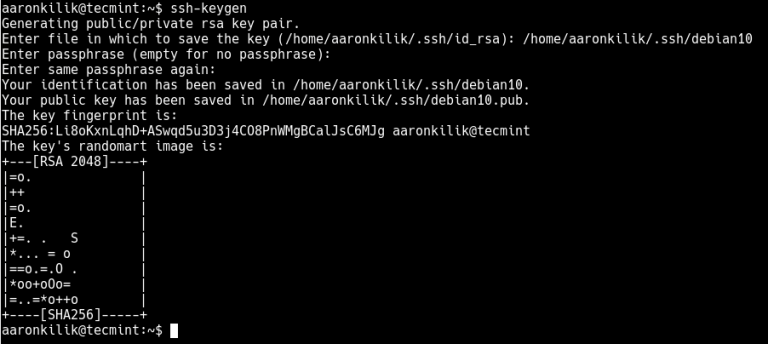


There are also a few useful options that you can combine with it: After entering ls, you will see an output that looks like this: This SSH command is used to list all files and directories. Search for a specific phrase in file/lines. Show current directory (full path to where you are right now). Show directory contents (list the names of files). Here’s a quick look of the basic SSH commands that we’ll cover in this article: SSH Command In this part, we will go through popular SSH commands, complete with their syntaxes and useful options. Now you’re connected to the server and can start executing SSH commands. If you are connecting to the server for the first time, you might get a warning message, telling you that the server is not recognized. Once you click the Open button on PuTTY or enter the command on the terminal, you will be prompted for a password.Ssh to replace “ user” with your real username and “ serverip” with your server’s dedicated or shared IP address. Using the built-in command prompt (Windows) or terminal shell (Linux, macOS).It will require you to enter the server’s IP and the port number into the corresponding fields. There are two recommended methods to establish an SSH connection:.Now let’s start accessing your remote server: If you want to learn more about it, we have a detailed tutorial on how SSH works. If you do not have password-based SSH access available, you have to add your public key to the remote server manually.SSH stands for Secure Shell, a protocol used to securely connect to a remote server or system. Manually from the Droplet without Password-Based Access
Ssh copy into directory password#
You are then asked to supply the password for the remote account:Īfter entering the password, it copies your key, and you can log in without a password. Ssh "mkdir -p ~/.ssh & cat > ~/.ssh/authorized_keys" Substitute the IP address and your username for your Droplet. On the remote side, verify that the ~/.ssh directory exists, and then append the piped contents into the ~/.ssh/authorized_keys file. If you do not have the ssh-copy-id utility available, but still have password-based SSH access to the remote server, you can pipe the contents of the key into the ssh command. Locally by Piping into ssh with Password-Based Access Now try logging in to the machine, with: "ssh ' '"Īnd check to make sure that only the key(s) you wanted were added.Īfter entering the password, it copies your key, and you can log in without a password.
Ssh copy into directory install#
usr/bin/ssh-copy-id: INFO: 1 key(s) remain to be installed - if you are prompted now it is to install the new keysĪfter typing in the password, the contents of your ~/.ssh/id_rsa.pub key are appended to the end of the user account’s ~/.ssh/authorized_keys file: Number of key(s) added: 1 usr/bin/ssh-copy-id: INFO: attempting to log in with the new key(s), to filter out any that are already installed The authenticity of host '203.0.113.0 (203.0.113.0)' can't be established.ĮCDSA key fingerprint is fd:fd:d4:f9:EX:AM:PL:E0:e1:55:00:ad:d6:6d:22:fe.Īre you sure you want to continue connecting (yes/no)? yes This prompts you for the user account’s password on the remote system: Substitute the IP address of your Droplet. If you have password-based access to your Droplet, you can copy your SSH key using ssh-copy-id. Locally Using ssh-copy-id and Password-Based Access Once logged in on the console, you can either add your key manually from the console or temporarily enable password authentication to add the key via SSH. If you currently can’t connect to your Droplet at all, use the Recovery Console to reset the root user password. This is a good choice if you don’t have ssh-copy-id.īy SSHing to your Droplet and adding the public key manually, which is necessary if you do not have password-based SSH access. If you currently have SSH access to the Droplet, you can upload keys:įrom your local computer using ssh-copy-id, which is included in many Linux distributions’ OpenSSH packages.įrom your local computer by piping the contents of the key into the ~/.ssh/authorized_keys file. Each Droplet you create is a new server you can use, either standalone or as part of a larger, cloud-based infrastructure.įor security reasons, you can’t add or modify the SSH keys on your Droplet using the control panel after you create it, but you have several options to add and modify them via the command line.

DigitalOcean Droplets are Linux-based virtual machines (VMs) that run on top of virtualized hardware.


 0 kommentar(er)
0 kommentar(er)
